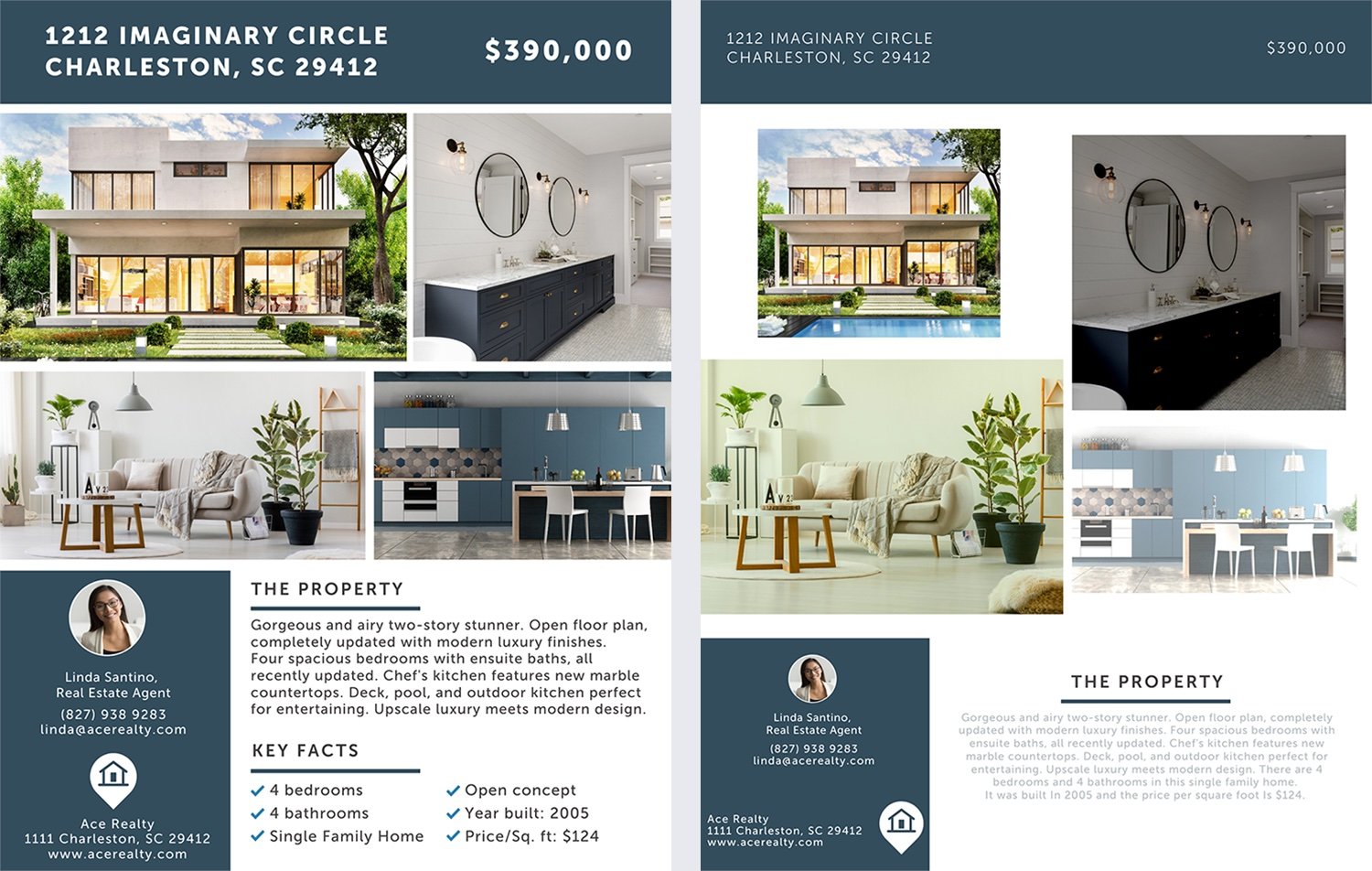Between websites, marketing materials, and open house ads, there’s a lot of design in the real estate biz! And, unfortunately, I bet you’ve had the experience of coming across an ad that looked bad, really bad. You probably thought, “Yikes, that looks unprofessional – how will they ever get anyone’s business with an ad like that?”
So, how can you make sure that doesn’t happen to you? Ideally, you’d hire a designer to help with all your marketing materials, but sometimes you can’t afford this (especially when you’re just starting out.) Fortunately, we have some easy-to-follow tips for all your real estate marketing needs!
Tip #1: Start With a Template
Laying out a piece from scratch is hard. Luckily for you, the internet is awash in templates for almost every kind of design you could reasonably need! From real estate website design to business cards, there are customizable templates out there (and many are even free).
Before you warm up your Googling fingers, though, check a little closer to home. It's likely that your broker or someone else on your team will have templates they use for stuff like this already. In fact, it may be mandatory to use their templates so that your brokerage's materials have a uniform look.
Tip #2: White Space Is Your Friend
White space is the area in a design that has nothing in it. While it's tempting to cram as much information into a document as physically possible, having enough white space helps reduce clutter and makes the text you have easier to read.
White space allows your messaging to stand out — it draws your audience to the most important information and makes things easy to scan. White space lets the eye "breathe."
Tip #3: Choose Complementary Colors
You want to make sure your document has color harmony between the background and the text. The background should not be distracting, and the text should easily stand out against the background.
The best color scheme is one that feels natural, not distracting. To achieve that:
Avoid super bright neon colors that might make it difficult to read
Don't use more than two or three colors, or you risk the design looking too busy
Tip #4: Use High-Quality Images
You are selling a product, whether that product is your services or a specific property. You want to ensure that any images work to show the product in the best possible light. It's critical that you use great photos, especially on any open house advertisements.
Photos should be well-lit and ideally taken at a wide angle. Hiring a professional photographer to take the listing photos is a smart move if you have any budget flexibility.
Use High-Resolution Images
Images should be high resolution to avoid blurry, pixelated photos. High-res photos allow you to crop to smaller sizes without sacrificing quality.
Resist the Stretch!
It can be tempting to play with photos to get them to fit into a space a certain way but don’t stretch your photos out. Doing so makes the photo look strange and unprofessional.
Organization
You can play with a grid of multiple images or just use one or two larger images. If you go with a grid, make sure it is organized, and the images within the grid are consistent in sizing, lighting, color temperature, etc.
Tip #5: Make it Easy to Read
Good design doesn't just mean making the visual elements pleasing. Good design will also make the text easier to read and digest quickly. Keep your text short and to the point.
Font
You’ve probably heard some opinions about fonts. Without getting into an argument, let’s focus on a couple of key things:
Is this font easy to read?
Does this font make you look professional?
I’m sure you’re fun to work with, but you don’t have to use a wacky font to show it! Trust us, your clients will figure it out, but they’ve got to want to work with you first.
Alignment
Use consistent text alignment and always organize the information in chunks. Left-aligned is the most common way to align text, but it could be right-aligned or centered.
Make Contact Information Stand Out
Make sure contact information is easy to find. On a flyer, for example, consider blocking off the contact information into a separate box or area to prevent it from blending in with the other information.
See it in Action
Look at the ads below. Which one is better?

If you said the one on the left, you’re right! See how applying these tips makes a huge difference?
Our courses are filled with nuggets of wisdom like you’ve read here. For more, sign up for a continuing education course today!
